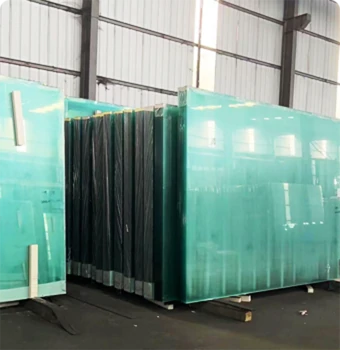The Advantages of Low Reflective Glass in Modern Architecture
In the realm of architectural design, the materials used play a pivotal role in shaping the aesthetics, functionality, and sustainability of a building. Among these materials, low reflective glass has emerged as a highly sought-after choice for its numerous benefits. This type of glass, characterized by its reduced light reflection properties, provides a multitude of advantages, making it ideal for modern architectural applications.
One of the most significant benefits of low reflective glass is its ability to enhance the visual appeal of both interiors and exteriors. Traditional glass can create glare, which not only disrupts the viewing experience but also detracts from the overall aesthetic of a building. Low reflective glass mitigates this issue by minimizing reflection, allowing for clear and unobstructed views of the surroundings. This quality is especially advantageous for buildings located in scenic areas or urban settings, where the connection between the indoor and outdoor environment is essential.
In addition to its aesthetic benefits, low reflective glass also provides greater energy efficiency. Buildings equipped with this type of glass tend to require less artificial lighting during the day, as it allows natural light to permeate the interior spaces effectively. This results in lower energy consumption and contributes to overall sustainability efforts. As architects and builders increasingly prioritize green building practices, incorporating low reflective glass into designs aligns with the goals of reducing carbon footprints and enhancing energy efficiency.
low reflective glass
Furthermore, low reflective glass offers improved thermal insulation compared to standard glass options. By integrating advanced coating technologies, this type of glass can regulate heat transfer, keeping indoor environments comfortable regardless of external weather conditions. This characteristic not only enhances the comfort of occupants but also reduces reliance on heating and cooling systems, leading to further energy savings. As a result, buildings can achieve better energy ratings, which can be a significant selling point for environmentally conscious consumers.
Safety and privacy are additional areas where low reflective glass excels. The decreased glare reduces the likelihood of accidents, as occupants and pedestrians are less likely to be blinded by reflective surfaces. Additionally, the transparency of low reflective glass allows for clear visibility without compromising privacy, making it an ideal choice for residential buildings and offices alike.
Another aspect worth noting is that low reflective glass can contribute to the longevity of a building's exterior. Traditional reflective glass can accumulate dirt and smudges over time, requiring frequent cleaning and maintenance. Low reflective surfaces tend to conceal these imperfections more effectively, leading to less maintenance work and lower long-term costs for building owners.
In conclusion, low reflective glass is more than just a design feature; it is an essential component of modern architecture that enhances aesthetics, energy efficiency, and occupant comfort while contributing to sustainability goals. With its ability to reduce glare, improve thermal insulation, and enhance safety and privacy, it represents a significant evolution in building materials. As the architectural landscape continues to evolve, the integration of low reflective glass will undoubtedly play a critical role in shaping the future of sustainable and visually stunning structures. Whether for residential, commercial, or institutional projects, low reflective glass stands out as a reliable and attractive choice.
 Afrikaans
Afrikaans  Albanian
Albanian  Amharic
Amharic  Arabic
Arabic  Armenian
Armenian  Azerbaijani
Azerbaijani  Basque
Basque  Belarusian
Belarusian  Bengali
Bengali  Bosnian
Bosnian  Bulgarian
Bulgarian  Catalan
Catalan  Cebuano
Cebuano  Corsican
Corsican  Croatian
Croatian  Czech
Czech  Danish
Danish  Dutch
Dutch  English
English  Esperanto
Esperanto  Estonian
Estonian  Finnish
Finnish  French
French  Frisian
Frisian  Galician
Galician  Georgian
Georgian  German
German  Greek
Greek  Gujarati
Gujarati  Haitian Creole
Haitian Creole  hausa
hausa  hawaiian
hawaiian  Hebrew
Hebrew  Hindi
Hindi  Miao
Miao  Hungarian
Hungarian  Icelandic
Icelandic  igbo
igbo  Indonesian
Indonesian  irish
irish  Italian
Italian  Japanese
Japanese  Javanese
Javanese  Kannada
Kannada  kazakh
kazakh  Khmer
Khmer  Rwandese
Rwandese  Korean
Korean  Kurdish
Kurdish  Kyrgyz
Kyrgyz  Lao
Lao  Latin
Latin  Latvian
Latvian  Lithuanian
Lithuanian  Luxembourgish
Luxembourgish  Macedonian
Macedonian  Malgashi
Malgashi  Malay
Malay  Malayalam
Malayalam  Maltese
Maltese  Maori
Maori  Marathi
Marathi  Mongolian
Mongolian  Myanmar
Myanmar  Nepali
Nepali  Norwegian
Norwegian  Norwegian
Norwegian  Occitan
Occitan  Pashto
Pashto  Persian
Persian  Polish
Polish  Portuguese
Portuguese  Punjabi
Punjabi  Romanian
Romanian  Russian
Russian  Samoan
Samoan  Scottish Gaelic
Scottish Gaelic  Serbian
Serbian  Sesotho
Sesotho  Shona
Shona  Sindhi
Sindhi  Sinhala
Sinhala  Slovak
Slovak  Slovenian
Slovenian  Somali
Somali  Spanish
Spanish  Sundanese
Sundanese  Swahili
Swahili  Swedish
Swedish  Tagalog
Tagalog  Tajik
Tajik  Tamil
Tamil  Tatar
Tatar  Telugu
Telugu  Thai
Thai  Turkish
Turkish  Turkmen
Turkmen  Ukrainian
Ukrainian  Urdu
Urdu  Uighur
Uighur  Uzbek
Uzbek  Vietnamese
Vietnamese  Welsh
Welsh  Bantu
Bantu  Yiddish
Yiddish  Yoruba
Yoruba  Zulu
Zulu 

